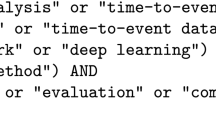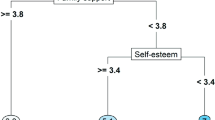Abstract
Recurrent event data often arise in biomedical studies, with examples including hospitalizations, infections, and treatment failures. In observational studies, it is often of interest to estimate the effects of covariates on the marginal recurrent event rate. The majority of existing rate regression methods assume multiplicative covariate effects. We propose a semiparametric model for the marginal recurrent event rate, wherein the covariates are assumed to add to the unspecified baseline rate. Covariate effects are summarized by rate differences, meaning that the absolute effect on the rate function can be determined from the regression coefficient alone. We describe modifications of the proposed method to accommodate a terminating event (e.g., death). Proposed estimators of the regression parameters and baseline rate are shown to be consistent and asymptotically Gaussian. Simulation studies demonstrate that the asymptotic approximations are accurate in finite samples. The proposed methods are applied to a state-wide kidney transplant data set.

Similar content being viewed by others
References
Aalen OO (1980) A model for nonparametric regression analysis of counting processes. In: Klonecki N, Kosek A, Rosinski J (eds) Lecture notes in statistics, vol 2. Springer, pp 1–25
Aalen OO (1989) A linear regression model for the analysis of life times. Stat Med 8:907–925
Andersen PK, Borgan O, Gill RD, Keiding N (1993) Statistical models based on counting processes. Springer-Verlag, NY
Andersen PK, Gill RD (1982) Cox’s regression model for counting processes: a large sample study. Ann Stat 10:1100–1120
Bilias Y, Gu M, Ying Z (1997) Towards a general asymptotic theory for the Cox model with staggered entry. Ann Stat 25:662–682
Breslow NE, Day NE (1980) Statistical methods in cancer research, vol 1. The design and analysis of case–control studies. IARC, Lyon
Breslow NE, Day NE (1987) Statistical methods in cancer research, vol 2. The design and analysis of cohort. IARC, Lyon
Buckley JD (1984) Additive and multiplicative models for relative survival rates. Biometrics 40:51–62
Cook RJ, Lawless JF (1997) Marginal analysis of recurrent events and a terminating event. Stat Med 16:911–924
Cox DR (1972) Regression models and life-tables (with discussion). J Roy Stat Soc Ser B 34:187–220
Cox DR (1975) Partial likelihood. Biometrika 62:262–276
Cox DR, Oakes D (1984) Analysis of survival data. Chapman & Hall, NY
Chang SH, Wang MC (1999) Conditional regression analysis for recurrence time data. J Am Stat Assoc 94:1221–1230
Fleming TR, Harrington DP (1991) Counting processes and survival analysis. Wiley, New York
Ghosh D, Lin DY (2002) Marginal regression methods for recurrent and terminal events. Stat Sin 12:663–688
Hougaard P (2000) Analysis of multivariate survival data. Springer, New York
Huang CY, Wang MC (2004) Joint modeling and estimation of recurrent event processes and failure time. J Am Stat Assoc 99:1153–1165
Huffer FW, McKeague IW (1991) Weighted least squares estimation for Aalen’s additive risk model. J Am Stat Assoc 86:114–129
Kalbfleisch JD, Prentice RL (2002) The statistical analysis of failure time data. Wiley, New York
Klein JP (1992) Semiparametric estimation of random effects using the Cox model based on the EM algorithm. Biometrics 48:795–806
Lawless JF (1995) The analysis of recurrent events for multiple subjects. Appl Stat 44:487–498
Lawless JF, Nadeau C (1995) Some simple robust methods for the analysis of recurrent events. Technometrics 37:158–168
Lee EW, Wei LJ, Amato DA (1992) Cox-type regression analysis for large numbers of small groups of correlated failure time observations. In: Klein JP, Goel PK (eds) Survival analysis: state of the art. Kluwer, Dordrecht, pp 237–247
Liang KY, Zeger SL (1986) Longitudinal data analysis using generalized linear models. Biometrika 73:13–22
Lin DY, Wei LJ, Yang I, Ying Z (2000) Semiparametric regression for the mean and rate functions of recurrent events. J Roy Stat Soc Ser B 62:711–730
Lin DY, Ying Z (1994) Semiparametric Analysis of the additive risk model. Biometrika 81:61–71
Lin DY, Ying Z (1995) Semiparametric analysis of general additive-multiplicative intensity models for counting processes. Ann Stat 23:1712–1734
Liu L, Wolfe RA, Huang X (2004) Shared frailty models for recurrent events and a terminal event. Biometrics 60:747–756
Pepe MS, Cai J (1993) Some graphical displays and marginal regression analyses for recurrent failure times and time-dependent covariates. J Am Stat Assoc 88:811–820
Pocock SJ, Gore SM, Kerr GR (1982) Long-term survival analysis: the curability of breast cancer. Stat Med 1:93–104
Pollard D (1990) Empirical processes: theory and applications. Institute of Mathematical Statistics, Hayward
Port FK, Bragg-Gresham JL, Metzger RA, Dykstra DM, Gillespie BW, Young EW, Delmonico FL, Wynn JJ, Merion RM, Wolfe RA, Held PJ (2002) Donor characteristics associated with reduced graft survival an approach to expanding the pool of donor kidneys. Transplantation 74:1281–1286
Prentice RL, Williams B, Peterson AV (1981) On the regression analysis of multivariate failure time data. Biometrika 68:373–379
Schaubel DE, Cai J (2005) Analysis of clustered recurrent event data with application to hospitalization rates among renal failure patients. Biostatistics 6:404–419
Sen PK, Singer JM (1993) Large sample methods in statistics. Chapman & Hall, New York
van der Vaart AW (2000) Asymptotic statistics. Melbourne, Cambridge
van der Vaart AW, Wellner JA (1996) Weak convergence and empirical processes. Springer, New York
Wang MC, Chen YQ (2000) Nonparametric and semiparametric trend analysis for stratified recurrence time data. Biometrics 56:789–794
Wei LJ, Lin DY, Weissfeld L (1989) Regression analysis of multivariate incomplete failure time data by modelling marginal distributions. J Am Stat Assoc 84:1065–1073
Yin G, Cai J (2004) Additive hazards model with multivariate failure time data. Biometrika 91:801–818
Acknowledegements
The authors thank the Scientific Registry of Transplant Recipients (SRTR), the Organ Procurement and Transplantation Network (OPTN), and the Pennsylvania Health Care and Cost and Containment Council (PHC4) for access to the linkage of their databases. They also thank the Associate Editor and Reviewers for many constructive comments which lead to improvement of the manuscript. This research was supported in part by National Institutes of Health grants R01 DK-70869 (DES), R01 HL-69720 (DZ), and R01 HL-57444 (JC). The SRTR is funded by contract number 231-00-0116 from the Health Resources and Services Administration, U.S. Department of Health and Human Services. The views expressed herein are those of the authors and not necessarily those of the U.S. Government. This study was approved by HRSA’s SRTR project officer. HRSA has determined that this study satisfies the criteria for the IRB exemption described in the “Public Benefit and Service Program” provisions of 45 CFR 46.101(b)(5) and HRSA Circular 03.
Author information
Authors and Affiliations
Corresponding author
Appendix
Appendix
Proof of Theorem 1
To begin the proof of strong consistency, we write:
Through repeated applications of the Strong Law of Large Numbers (van der Vaart 2000), this quantity can be shown to converge almost surely to 0. With respect to asymptotic normality,
which can be shown to be asymptotically equivalent to
using the strong convergence of \(\widehat{\bf A}\) to A and using results from empirical processes (Pollard 1990; Bilias et al. 1997) to demonstrate the convergence of \(n^{-1/2}\sum_{i=1}^n\int_0^\tau\{\overline{\bf Z}(s)-\overline{\bf z}(s)\}\hbox{d}M_i(s;\varvec{\theta}_0)\) to 0 in probability. The proof of convergence to a zero-mean random vector is complete upon applying the Multivariate Central Limit Theorem (Sen and Singer 1993) to (16).
Proof of Theorem 2
Set \(\widehat{\xi}(t)=\widehat{\xi}_1(t)+\widehat{\xi}_2(t)\), where
By the Triangle Inequality, \(|\widehat{\xi}(t)|\leq |\widehat{\xi}_1(t)| + |\widehat{\xi}_2(t)|\). Now,
Using the Uniform SLLN (Pollard 1990) and the almost sure convergence of \(\widehat{\varvec{\theta}}\) to \(\varvec{\theta}_0\), \(\widehat{\xi}_1(t)\) converges almost surely to 0 uniformly in \(t\in[0,\tau]\). In a similar fashion, \(\widehat{\xi}_2(t)\) can be shown to converge strongly to 0 uniformly.
With respect to the process \(n^{1/2}\widehat{\xi}_1(t)\), we begin with
Substituting in (15),
then using the strong convergence of \(\widehat{\bf A}\) to A along with various empirical process results gives
which behaves asymptotically as sum of independent and identically distributed mean-zero variates. Similarly, it can be shown that
Combining (17) and (18),
which has finite distributions which converge to those of a zero-mean normal variate. Tightness can be shown by demonstrating the manageability of the components of \(\phi_i(t)\), thus proving that \(n^{1/2}\widehat{\xi}(t)\) converges to a mean-zero Gaussian process with covariance function \(E[\phi_1(s)\phi_1(t)]\).
Rights and permissions
About this article
Cite this article
Schaubel, D.E., Zeng, D. & Cai, J. A semiparametric additive rates model for recurrent event data. Lifetime Data Anal 12, 389–406 (2006). https://doi.org/10.1007/s10985-006-9017-x
Received:
Accepted:
Published:
Issue Date:
DOI: https://doi.org/10.1007/s10985-006-9017-x




